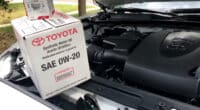The Scion FRS is the ultimate driver-centric sports car, and part of the reason why that’s the case is because of its engine. Many enthusiasts dislike its underpowered nature, and others love that it’s rev-happy.
Despite being a 2.0L making 200 hp, the engine feels more than adequate for the kind of handling and driving dynamics provided by the ZN6 chassis.
So whether you’re wanting to purchase a used FRS, or you simply want to know more about the engine that powers it, you’ll find everything you want to know in this guide.
The 2.0L Boxer Engine
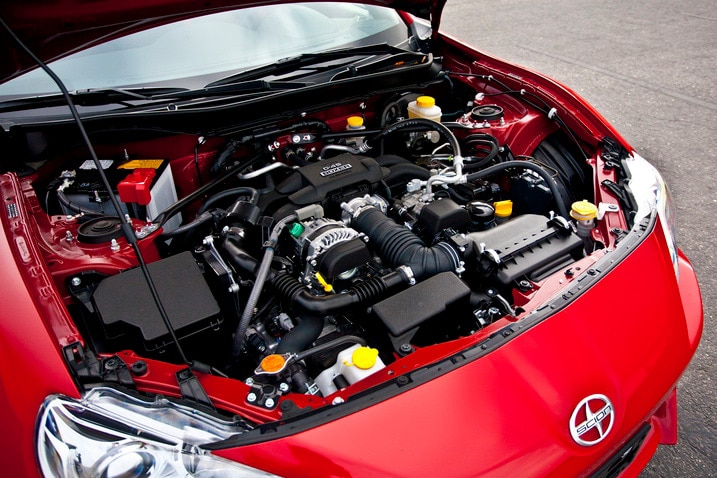
When you look into the Scion FRS engine bay, the first thing you’ll see is the FA20D boxer engine, with “Toyota D-4s” and “Subaru” printed on the engine cover.
In case you’re wondering who makes this engine, it’s Subaru. Here’s what the engine code stands for:
- FA: Subaru engine family
- 20: Displacement (deciliters)
- D: Multi-point fuel injection
The FA20D is a 2.0L flat-4 engine — the same motor that powers the 1st generation Toyota 86 and Subaru BRZ.
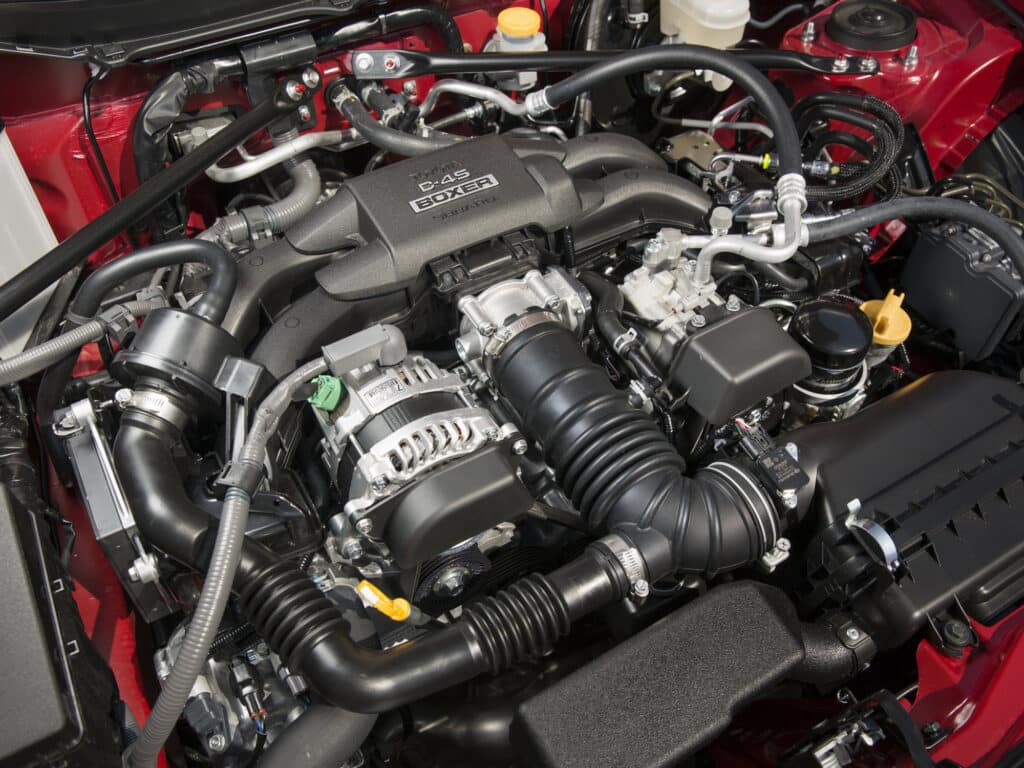
Here are some of its performance specs.
Engine code: FA20D/4U-GSE
Layout: Flat-4 boxer
Displacement: 2.0L
Cylinder bore: 86.0 mm
Piston stroke: 86.0 mm
Compression ratio: 12.5:1
Power: 200 hp at 7000 rpm
Torque: 151 lb-ft at 6400 rpm
Firing order: 1-3-2-4
The FA20D has an aluminum cylinder block and cylinder heads, with 16 valves (4 per cylinder) regulated by dual overhead camshafts.
It features Subaru’s Active Valve Control System, abbreviated as AVCS. This is an ECU-controlled, hydraulic camshaft gear that adjusts the valve timing depending on the engine load.
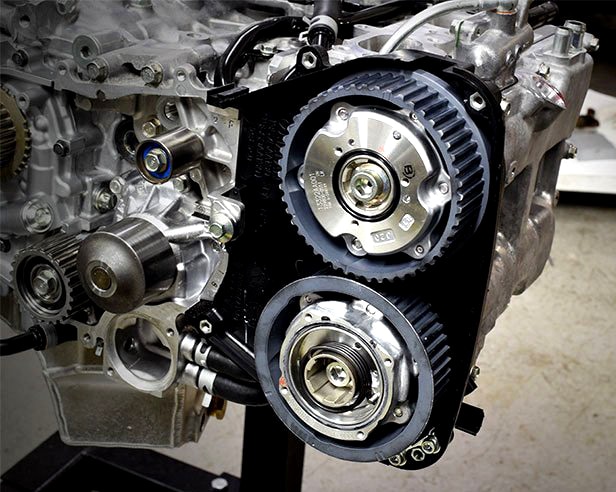
With this engine, you also get Toyota’s D-4s fuel system which blends direct and port injection.
This system features 2 injectors per cylinder — 1 direct injector and 1 port injector which spray fuel into the combustion chamber as well as the intake ports, depending on engine speed.
At lower engine speeds, both the direct and port injectors are activated, which helps to even out the air-fuel mixture, enhancing power and stabilizing combustion as a result.
But at higher engine speeds, only the direct injection system is active. This creates an intake cooling effect and reduces the chances of pre-ignition and detonation.
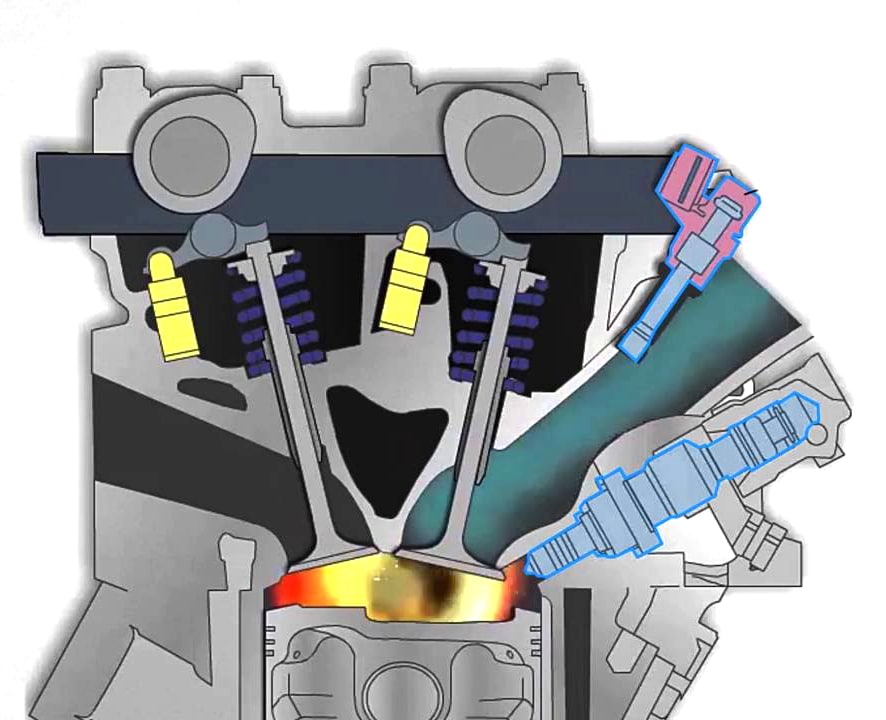
Another advantage of D-4s is that it eliminates the need for a walnut blasting treatment every 50,000 miles or having to use an oil catch can to filter out blow-by gasses from the crankcase ventilation system.
It’s no wonder why the FA20D won the Wards Auto 10 best engines award. The engine effortlessly blends efficiency, performance, and power.
Combine that with the ZN6 platform and it completes the recipe for a proper driver’s car.
The engine is naturally aspirated. It pushes 200 hp at 7,000 rpm and 151 lb-ft of torque at 6,660 rpm. All of this translates to a 0 to 60 time of 6.4 seconds as long as you have the manual transmission.
Of course, these are stock performance specs. What really makes this flat-4 shine is how easily it can handle modifications.
Notable Scion FRS Engine Problems
The FA20D engine is as durable as it gets, but at the end of the day, it’s still a machine, and it comes with its own set of unique problems.
However, it’s worth mentioning that the problems discussed below don’t affect most of these cars. Most of these issues were taken care of by Scion before 2015.
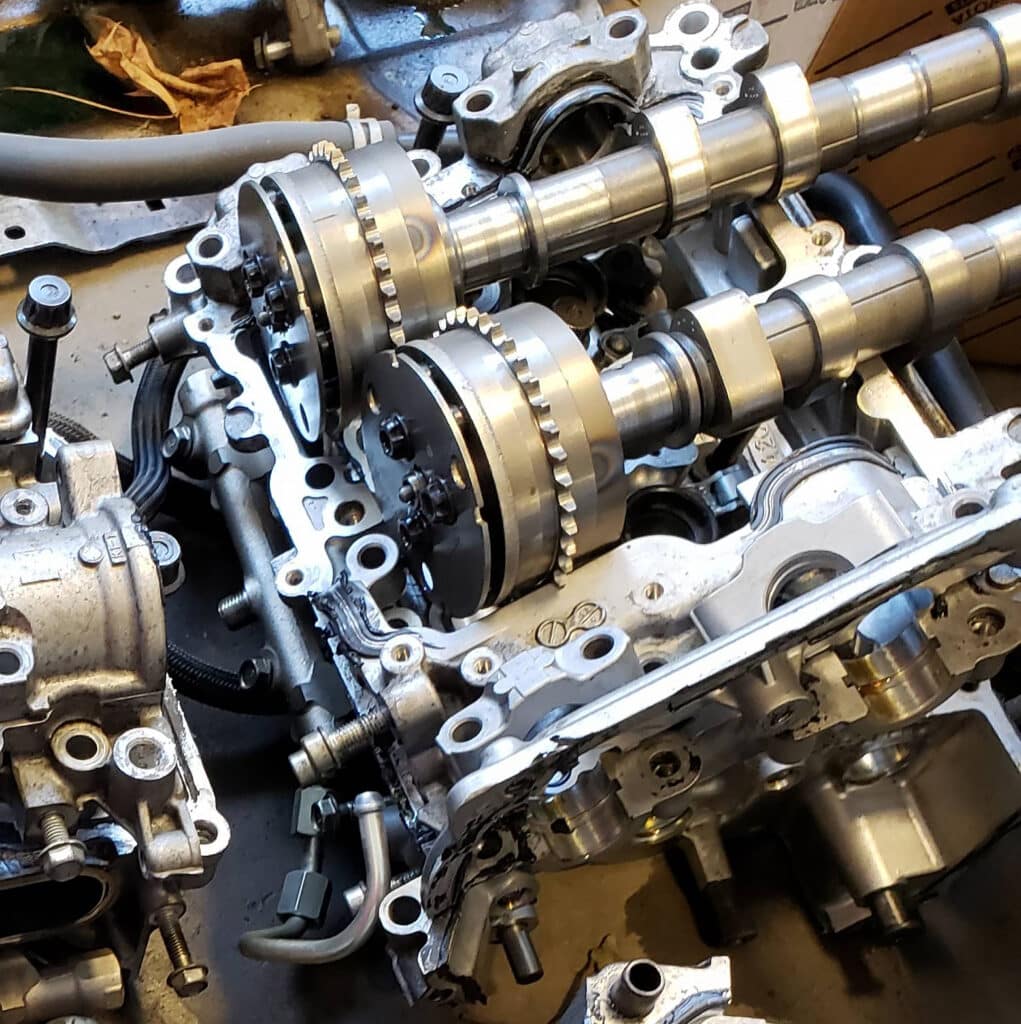
So unless you have a pre-2015 FRS on hand, there isn’t much to worry about. Just keep an eye on the fluids, take care of the car, and don’t beat on it unless you know what you’re doing. Avoid those money shifts.
If you’re buying a used pre-2015 FRS, make sure that the previous owner has been diligent in doing all the TSB updates and didn’t cut any corners.
Because if that’s not the case, you’ll most likely run into the issues mentioned below.
Defective Engine Valve Springs
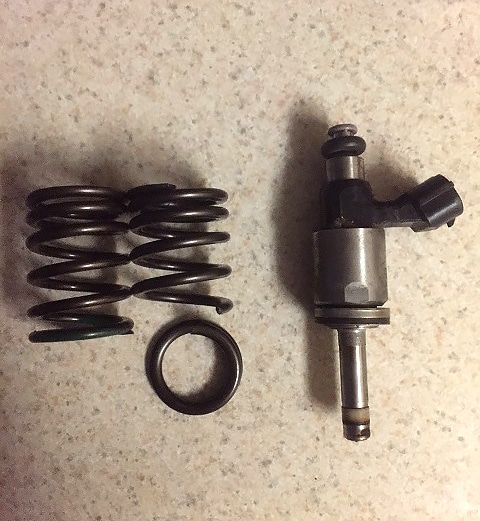
This is by far the most serious concern with the 2.0L boxer engine. In 2018 both Subaru and Toyota issued a recall for over 400,000 of these cars owing to defective valve springs that were prone to cracking.
There’s a lot of debate surrounding this issue among Subaru BRZ and Scion FRS owners. due to the recalls and repairs being allegedly worse for their cars.
Find out more in our FRS tech specs and reliability guide.
Cracked Oil Drain Plug
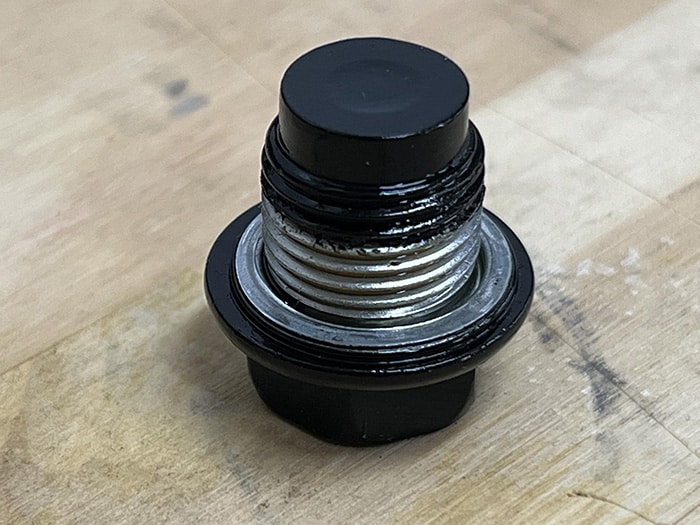
This is a pretty mild problem in the grand scheme of things, but it can still be a little frustrating if it’s happening to you.
The oil drain plugs on these cars are prone to cracking easily when over-torqued. When that happens, the only solution is to get it replaced.
On the plus side, replacement drain plugs aren’t expensive and if you’re careful when completing an oil change you won’t have any problems. Or you can use a quick drain oil plug instead.
It’s also usually pretty easy to identify, just look for an oil leak coming from the very bottom of the drain pan on the engine.
Rod Knock/Spun Bearing

Journal bearings are like shims that sit right between the point where the con-rod connects to the crankshaft.
However, these bearings never make contact with the rod journal. They constantly glide over the rod journal over a thin film of oil supplied by the oil gallery and that’s how they facilitate rotational movement.

If for whatever reason, the journal bearing doesn’t get enough oil, it creates a ton of friction, which causes it to either crack or get seized onto the rod journal surface.
When the latter happens, the outer side of the bearings spins against the con rod itself, which creates heat and friction.
Eventually, the bearings get bent out of shape due to excessive pressure, which could cause the piston to sit higher than normal and hit the valves.
That’s just one scenario of what could go wrong. Spun bearings can cause a myriad of different problems.
The journal bearing that connects the con rod to the crankshaft doesn’t have oil in it. There is usually a thin film of oil that passes through
Valve Rocker Failure
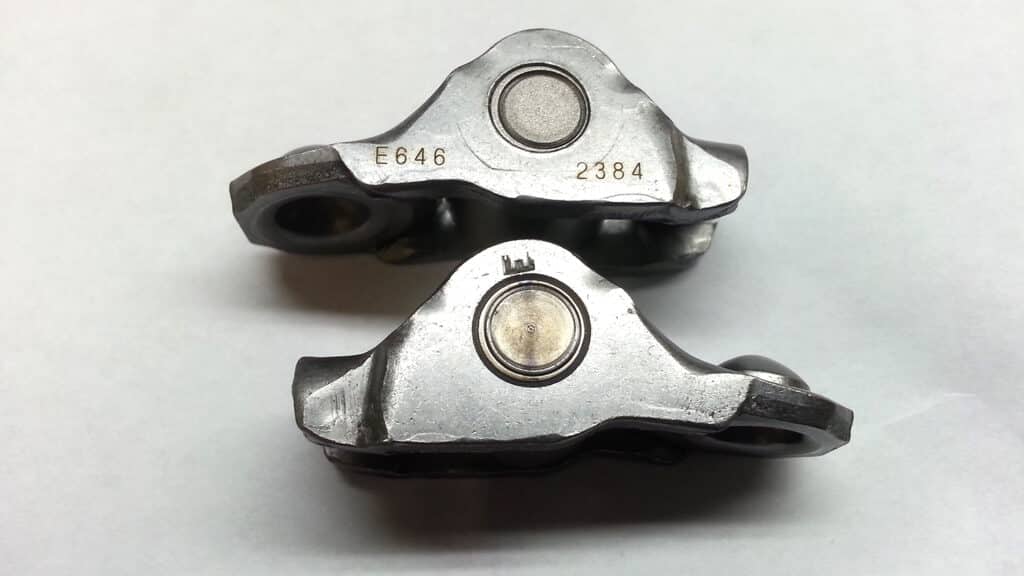
9 times out of 10, it’s not the valve rocker arm that’s faulty. Instead, it’s a supplementary component that usually fails.
In the case of early FRS engines, the axle for the rocker arm is prone to falling out, which destabilizes the rocker arm and causes it to get damaged.
This is a potentially severe issue because when anything inside your engine breaks, the debris can get circulated in other sensitive areas of the engine which causes more damage.
One way to diagnose this issue is you can hear a sewing-machine-like tapping sound when the engine is warm.
Connecting Rod Failure
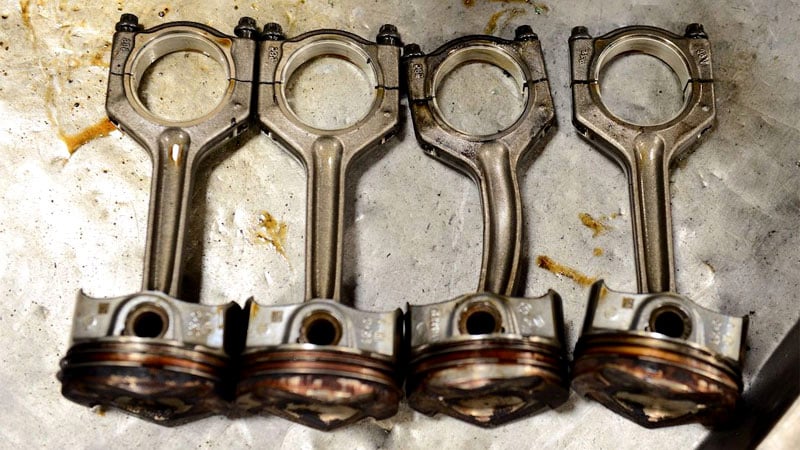
This issue is quite rare for naturally aspirated FA20D engines. But if you intend on boosting your FRS somewhere down the line, then this is something you should know about.
The stock con rods in this engine aren’t designed to handle forced induction, so they tend to break, which can lead to the possibility of requiring an engine replacement.
Concluding Thoughts

All that said, the FRS is most definitely one of the more reliable used tuner cars that you can buy. It’s backed by an enormous community and the amount of information available is nearly endless.
Modification potential is huge, but you can always leave it stock if you want it to stay as durable as possible.
And besides, there’s not much to be gained from naturally aspirated modifications. FRS superchargers and turbochargers are where it’s at if you want to see some real gains.
If that’s not your thing, you can always stick to reliability mods like installing aftermarket transmission cooler and oil coolers.
Or if you want to change the way it drives, you can install FRS coilovers and experiment with alternate drive ratios.
Do you already own an FRS? Have you faced any of the issues mentioned above? Let us know by leaving a comment below!
If this article has helped you, do consider sharing it with your friends on Facebook and other online communities. We appreciate your support.

